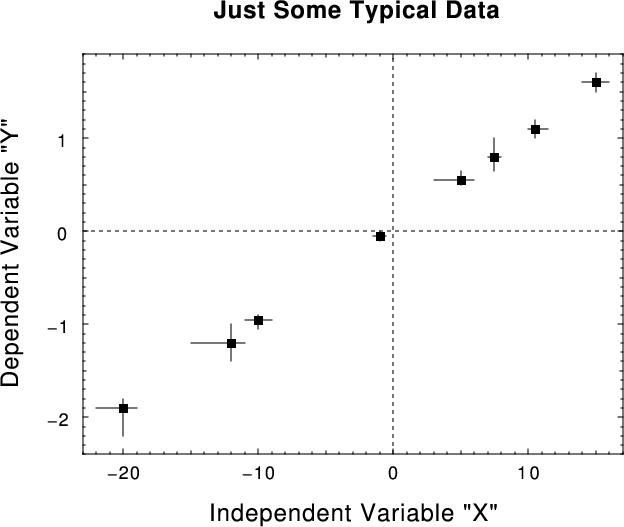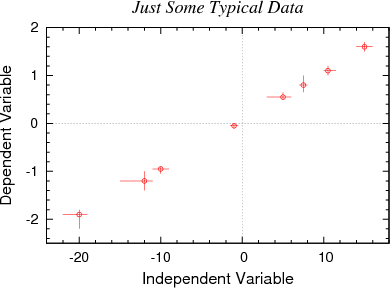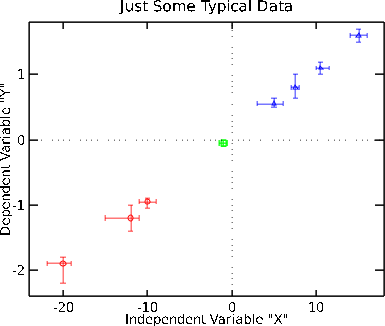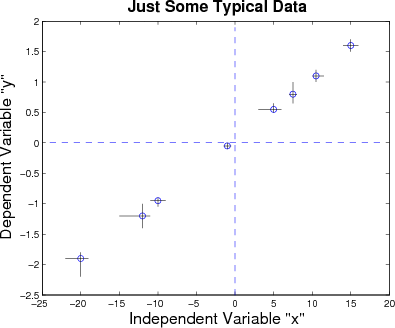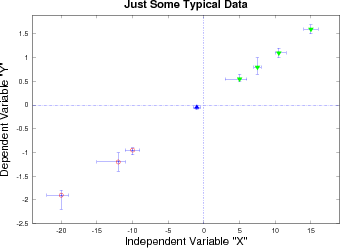TITLE
Just Some Typical Data
LABELS
Data Set Number
Independent Variable "X"
Dependent Variable "Y"
DATA DSN X Y
1,,, -20,1,2, -1.9,0.1,0.3,
1,,, -12,1,3, -1.2,0.2,,
1,,, -10,1,, -0.95,0.05,0.1,
2,,, -1,0.5,, -0.05,0.05,,
3,,, 5,1,2, 0.55,0.1,0.05,
3,,, 7.5,0.5,, 0.8,0.2,0.15,
3,,, 10.5,1,0.5, 1.1,0.1,,
3,,, 15,1,, 1.6,0.1,,
